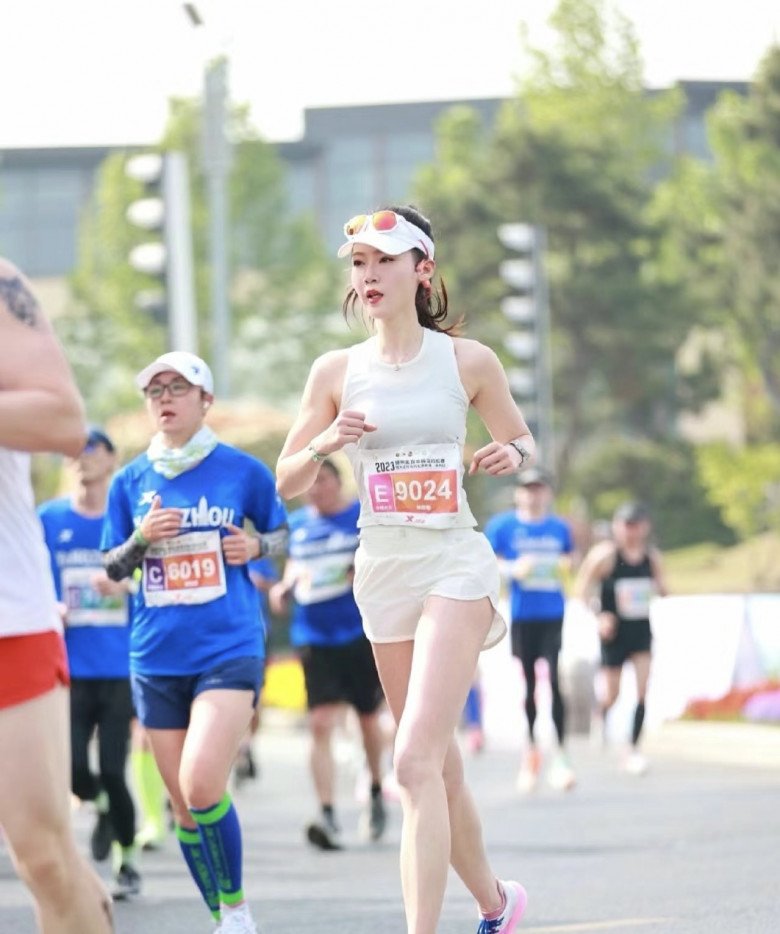To conquer the sport of running, it’s essential for women to understand the techniques involved in different distance running, as well as their own training goals.
For Beginners
When embarking on a new sport, it’s natural to have questions about technique and to be unsure about the intensity of training. So, a 5km distance is the most suitable place to start.

Start with a slow pace and focus on maintaining a steady breathing pattern.
In your first training session, try covering a distance of 1-3km, and then gradually increase it. Run at a slow pace, with a recommended pace of 8-9 minutes/km, allowing you to still hold a conversation with someone next to you. This also helps train your breathing. If you feel your breath becoming uneven, take a walking break for 30 seconds to a minute before continuing.
For Those Looking to Lose Weight and Improve Fitness
Weight Loss and Body Toning
When it comes to weight loss and toning your body, it implies a higher intensity training regimen.

Running doesn’t require complex techniques, but it is one of the most effective ways to lose weight.
Research shows that just 30 minutes of running every day can help you burn between 200 and 500 calories, depending on your speed, distance, weight, and external factors such as terrain and weather.
You can maintain a 5km distance and run three times a week to gradually adapt and have rest days. When you’re used to it, or if you need a more rigorous and rapid weight loss plan, you can gradually increase the distance to 10km.
At the 10km distance, you don’t have to push yourself to run at the same pace or time as the 5km distance. You can slow down to let your body breathe and avoid exhaustion. The key is to cover a longer distance so that your body burns more calories.
Improving Fitness
For those looking to improve their fitness, it’s important to note that while running provides numerous benefits, overdoing it can be counterproductive and lead to injuries.
It takes about six months to a year for your body to adapt to a new training intensity. So, consider your physical condition, endurance, work schedule, and lifestyle when creating a running routine.
To increase your endurance and quickly adapt to longer runs, try increasing your weekly running distance.

Add 5-10 minutes to your runs each time, or incorporate sprinting to boost your fitness.
Try sprinting once a week: run at a fast pace for 10 minutes, then gradually slow down, run steadily for 2-3 minutes, and then sprint again for 10 minutes. Do this consecutively for three weeks to help your body adjust to the intensity.
For Those Aiming to Compete in Running Events
21km (Half-marathon) Distance
To compete at the 21km distance, a high level of endurance is required. Prior to this, women need to go through a systematic and regular training process at the 10km distance.

The 21km (Half-marathon) distance is more accessible than a full marathon, but it still requires training to maintain endurance.
After switching to the 21km goal, try running 3-4 times a week, and each time, start with a slow and steady run of about 1.5-3km to warm up your body. Run at a slower pace than the 5km distance to maintain your energy.
42km (Marathon) Distance
This distance is exclusively for professional, semi-professional, and experienced runners, so it will challenge both your physical and mental strength.

The 42km distance is a significant challenge, so make sure to follow a structured training program.
Create a detailed plan to achieve this goal, including when to run slowly and when to push the pace, when to hydrate, and the pace required to meet your target. Prior to this, you should have been training for 4-5 months, running a minimum of 60-80km per week.































